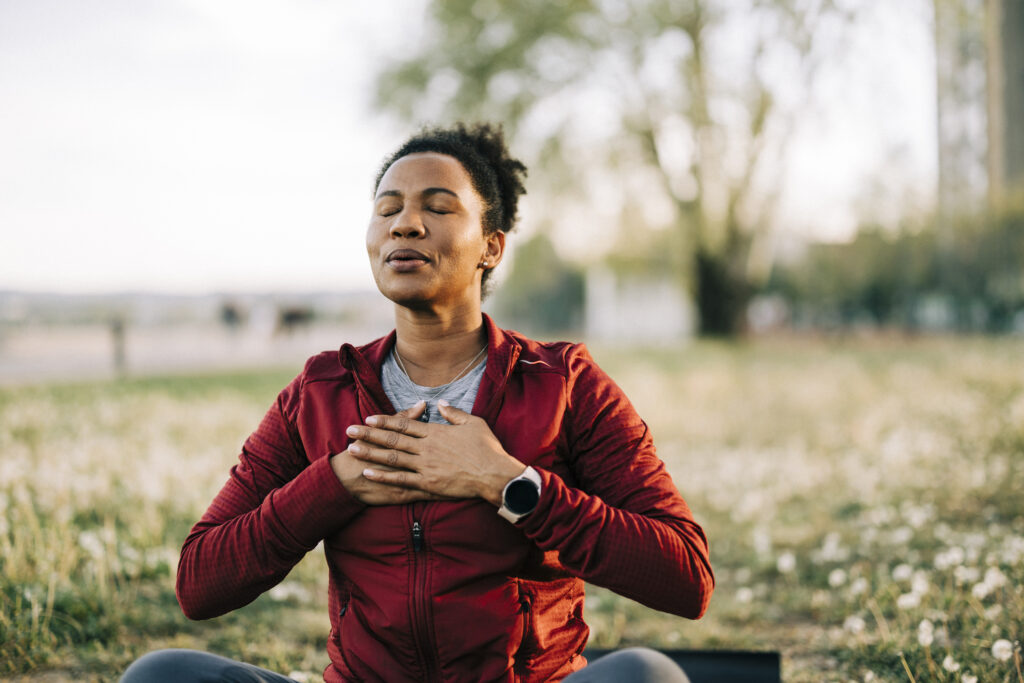
Mindfulness Exercises to Implement into Your Day-to-Day
This post on Mindfulness is written by Ilana Weinstein, BA
Mindfulness is a skill you can use to be present in the moment. It is often used when an individual is experiencing distress, anxiety, or difficulty making decisions. However, mindfulness activities can also be implemented throughout your day-to-day, when stress and anxiety are not present. Mindfulness helps center yourself without distractions; it can be done in small increments, for example, in just a few minutes. Overall, there is no “right” or “wrong” way to engage in a mindfulness activity!
Below are five mindfulness exercises to consider implementing into your day-to-day!
Start a Gratitude List

A gratitude list is helpful improve overall happiness by focusing on the things we value and are grateful for. To implement this, you can spend five minutes a day making a list of things you are grateful for. It’s helpful to have this list scheduled into your day. For instance, if you’re a morning person, it could be helpful to do this right when you wake up. You can also do this at the end of your day, before bed.
Take a Nature Walk
Going for a mindful nature walk can help bring presence into your day. It’s all about finding your groove! A mindful walk can look different for different people. For some, they walk mindfully by focusing on how their feet move or how it feels to walk. For others, they might focus on what colors they see around them.
Another way to implement this is to go on a scavenger hunt. Doing a scavenger hunt can look like a checklist of things to look for on a nature walk. When you see one of the things you’re looking for, you can check it off!
While on your walk, consider listening to one of our recommended mental health podcasts!
Try Box Breathing

There are many different breathing exercises that you can do to increase your mindfulness. One example of a breathing exercise you can use is box breathing. Specifically, the first step is to imagine a box or a square. In this exercise, you hold your breath for four seconds while thinking about one side of the box, then, you breathe in for four seconds, while thinking about the other side of the box. After, you repeat those steps for the other sides of the box. Deep breathing is a tool that you can use to decrease anxiety, lower heart rate, and overall, feel more relaxed and present.
Check out our post on the various forms of self-care!
Practice the “Leaves on a Stream” Exercise
“Leaves on a Stream” is a visual, mindful exercise that only takes a few minutes! For this exercise, you can close your eyes and imagine leaves floating on a stream. With that, you can think about the environment you’re in…is it cold? windy? what does it sound like? Each time you notice a thought or a feeling, put that thought or feeling on the leaf.
Once you put it on the leaf, let it float away. If it comes back, that’s okay, just send it on the stream again. With this exercise, it’s normal and okay to lose track of the activity. When this happens, bring yourself back to watching the leaves on the stream. Likewise, regardless of the flow of the water, just let it be. Remember, you are just observing the leaves and putting your thoughts on them. After a few minutes, slowly lose the picture of the leaves on a stream and open your eyes at your own pace.
Embrace the Five Senses
Lastly, my favorite mindfulness activity! This activity allows you to focus and hone in on how you’re feeling. The first step is to think about your vision; with this, look around you and name 5 things you can see. Following this, focus on your sense of touch. Again, look around and describe and name 4 things you can touch.
Next, listen very carefully. While listening, name 3 things that you can hear. After this, pay attention to your sense of smell; name 2 things you can smell around you. Lastly, hone in on your sense of taste…name one thing you can taste. You can either describe the taste of your mouth or you can take a bite or sip of something.
There are many mindfulness exercises you can try, including any of the ones mentioned above or ones that you found elsewhere. However, just remember that these can be implemented during the day, regardless of whether distress is present or not. The overall key is to be present in the moment…slowly breathe in, slowly breathe out, slowly breathe in, and slowly breathe out.
Check out our other popular blog posts:
